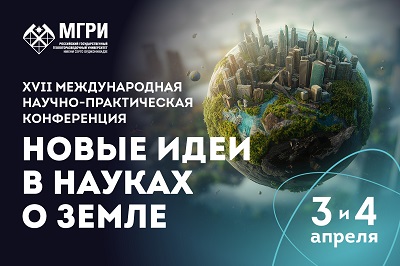Optical properties, inclusions, and chemical composition of blue corundum from the Stazh-2 deposit, South-Western Pamir
https://doi.org/10.32454/0016-7762-2024-66-2-112-123
Abstract
Background. The Stazh-2 deposit of blue corundum is a representative object in the post- Soviet territory with prospects for mining of jewelry crystal raw materials. In terms of its geological position, the deposit can be classified as a contact-reaction (bimetasomatic) deposit formed in the contacts of granite veins and magnesites, being comparable to the world-famous Kashmir Sumjam deposit. During its study at the end of the last century, no mineralogical studies of blue corundum were conducted using precision methods, such as IR, Raman and absorption spectra, DiamindView luminescence, in order to establish patterns in color distribution, solid and gas-liquid inclusions, deformations and chemical composition. Determination of these parameters could serve as a basis for the involvement of crystal from this deposit in the jewelry industry.
Aim. Examination of blue corundum from the Stazh-2 deposit located in Archean magnesite marbles of the Goran metamorphic series of the South-West Pamir using IR, Raman spectra, absorption spectra, and DiamondView luminescence to establish color distribution within crystals, solid and gas-liquid inclusions, deformations, and their chemical composition.
Materials and methods. Four polished plates weighing from 0.48 to 0.76 carats with an area of about 1 cm2 and a thickness of 1.5—2 mm, as well as two faceted inserts — “Oval” 2.86 carats, 9.5x7.5 mm, and “Circle” 1.35 carats, 9 mm. The inserts were prepared from samples from the collection of the Department of Mineralogy and Gemology, Russian State Geological Prospecting University (MGRI). The research methodology comprised (1) optical microscopy using a Leica S9D stereomicroscope; (2) infrared spectroscopy in the mid-IR range from 400 cm-1 to 4500 cm-1 with a Nicolet iS50 FT-IR Thermo Scientific FT-IR spectrometer, detector DTGS KBr, aperture 200, resolution 4 cm-1 , PIKE DRIFTS attachment; (3) Raman spectroscopy using a confocal Renishaw InVia Qontor Raman-microspectrometer with an excitation solid-state laser 532 nm, nominal power 100 mW and diffraction grating 1800 lines/mm; (4) UV-Vis-NIR absorption spectroscopy by a PerkinElmer Lambda 1050WB spectrometer in the range of 270—1200 nm, a spectral resolution of 0.5 nm, a scanning speed of 56.7 nm/min; (5) micro-X-ray fluorescence analysis using a Bruker TORNADO M4 micro-XRF spectrometer with an X-ray tube power 20 W and a vacuum mode of 20 mbar, an X-ray beam diameter of 50 μm; (6) luminescence imaging in short-wave radiation 225 nm, recorded using a Diamond View device. Instrumental studies were carried out at the Gemstone Research Laboratory of Gokhran of Russia.
Results. (1) For the first time, spectrometric data of blue corundum from the Stazh-2 deposit were obtained by IR-, Raman, and UV-Vis-NIR spectroscopy methods, as well as micro-XRF. (2) In blue corundum, a local (focal) content of chromium, an element alien to granites, was established. Here, metasomatites with corundum were formed. Areas with chromium exhibit sharp rectilinear boundaries. (3) Zircon, diaspore, boehmite, muscovite, calcite, as well as gas-liquid inclusions with CO2, were determined in the composition of blue corundum. (4) Two color generations due to newly formed fractures and minerals were identified. (5) The inclusions of diaspore, boehmite, muscovite, and calcite are the result of the hydration and carbonation reactions that occurred between corundum and anorthite at later development stages. (6) The blue corundum samples contained Ti and Fe with a predominance of Ti over Fe, which is a distinctive feature of the Stazh-2 deposit from other deposits of blue corundum and sapphires.
Conclusion. The obtained materials can be used by Gokhran of Russia for identifying sapphires of the contact-reaction (bimetasomatic) genesis, which include Kashmir sapphires of the highest quality, as well as for educational purposes.
About the Authors
A. K. LitvinenkoRussian Federation
Andrei K. Litvinenko — Dr. Sci. (Geol.-Min.), Professor of the Department of Mineralogy and Gemmology
23, Miklukho-Maklaya str., Moscow 117997
D. B. Vandanova
Russian Federation
Darima B. Vandanova — Leading Expert of the Gemstone Research Laboratory of the Research Department of the Scientific and Technical Department
.
14, 1812 Goda str., Moscow 121170
O. A. Shilova
Russian Federation
Oksana A. Shilova — Chief Expert of the Gemstone
Research Laboratory of the Research Department of
the Scientific and Technical Department
14, 1812 Goda str., Moscow 121170
S. B. Pakhomova
Russian Federation
Svetlana B. Pakhomova* — Chief Expert of Gemstone Research Laboratory of the Research Department of the Scientific and Technical Department
14, 1812 Goda str., Moscow 121170
References
1. Kiselev V.I., Budanov V.I. Deposits of Precambrian igneous-scarne formation of the South-West Pamir. Dushanbe: Donish, 1986. 223 p. (In Russian).
2. Litvinenko A.K. Mineralogeny of sapphire- and ruby-bearing metasomatites of the South-West Pamir. Lipetsk: LSPU, 2006. 128 p. (In Russian).
3. Litvinenko D.A., Litvinenko A.K. About bimetasomatic sapphire from the deposit Stazh-2, South-West Pamir // Mineral raw material base of diamonds, noble and non-ferrous metals — from forecast to production. Moscow: CNIGRI, 2021. P. 88—91 (In Russian).
4. Litvinenko D.A., Litvinenko A.K. Peculiarities of the chemical composition of sapphire from the deposit Stazh 2, South-West Pamir // X International Conference of Young Scientists “Young Earth Scientists”. Theses of reports. 2022. Vol. II. P. 157— 161 (In Russian).
5. Perelman A.I. Geochemistry. Moscow: Vysshaya Shkola, 1989. 528 p. (In Russian).
6. Plusnina I.I. Infrared spectra of minerals. Moscow: Moscow university publ., 1977. 175 p. (In Russian).
7. Atkinson D., Kotthavala R.Z. Kashmir sapphire // Gem & Gemmology (summer). 1983. Vol. 19. No. 2. P. 64—76.
8. Hughes R.W., Manorotkul W., Huges E.B. Ruby and Sapphire: A Gemologist’s Guide. LOTUS new direction in Gemology. Bangkok, Thailand, 2017. 816 p.
9. Palke A.C., Saeseaw S. Renfro N.D., Sun Z., McClure F. Geographic Origin Determination of Blue Sapphire // Gem & Gemology, Winter. 2019. Vol. 55, no. 4. P. 536—579.
10. Database of Raman spectroscopy [Electronic resource]. URL: https://rruff.info/ (date of reference: 29.06.2023).
Review
For citations:
Litvinenko A.K., Vandanova D.B., Shilova O.A., Pakhomova S.B. Optical properties, inclusions, and chemical composition of blue corundum from the Stazh-2 deposit, South-Western Pamir. Proceedings of higher educational establishments. Geology and Exploration. 2024;66(2):112-123. (In Russ.) https://doi.org/10.32454/0016-7762-2024-66-2-112-123









































